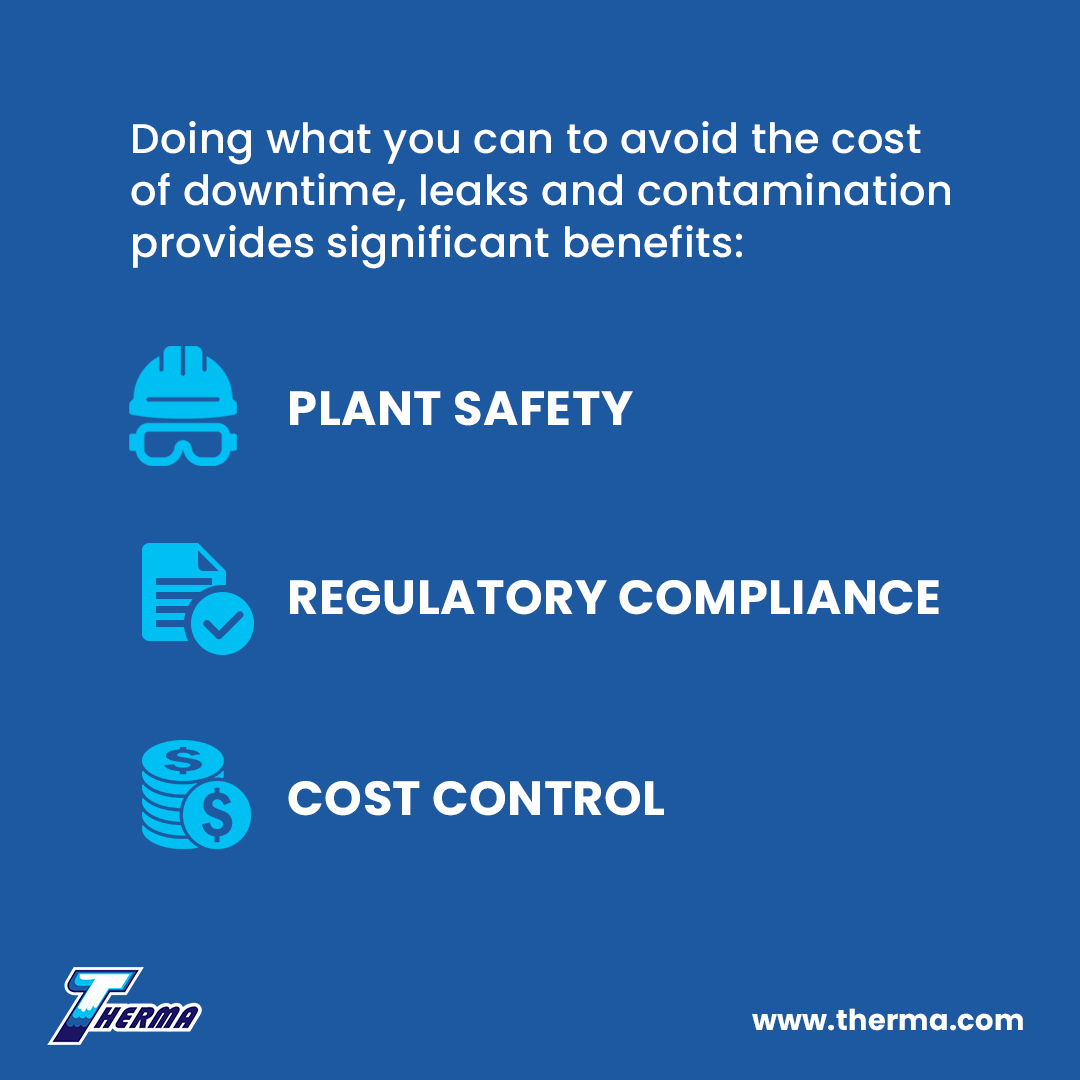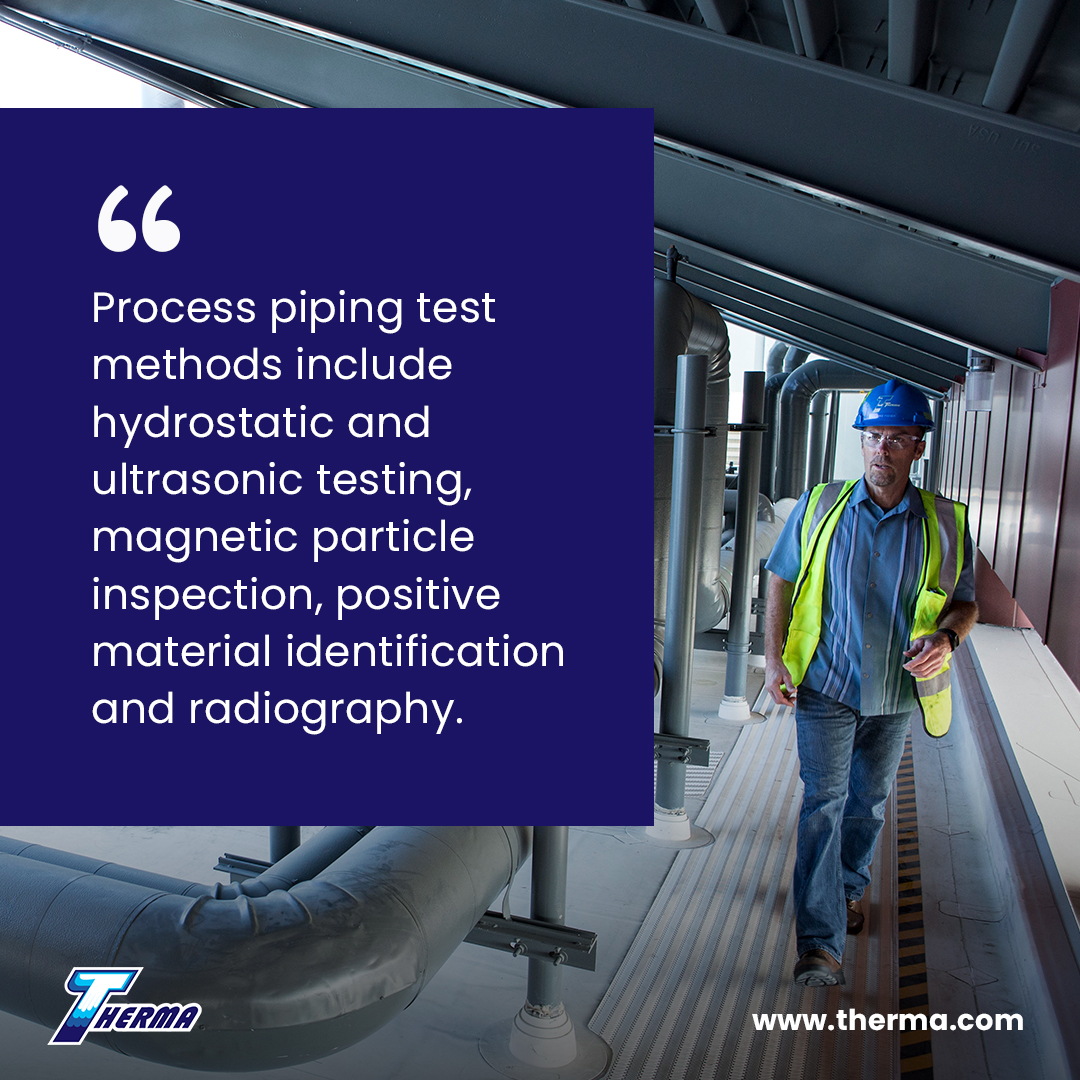Proper industrial piping checks pipe strength, joints, valves, gaskets, and other components of your industrial piping to ensure that it safely handles the materials and pressures required of it. Doing what you can to avoid the cost of downtime, leaks and contamination provides significant production benefits and there are other important ways in which knowing the status and condition of your piping pays off.
Testing is beneficial in three areas:
- Plant Safety: Protecting your workers
- Regulatory Compliance: The known, documented status of your systems and tests
- Cost Control: Managing and predicting costs and preventing avoidable breakdowns
Plant Safety

Plant safety benefits include not only the proper performance of the pipes, but the proper operation of process equipment, valves, and controls. Pressure variations, leaks, and improper operation of equipment can produce unintended side effects which harm personnel in the area.
Regulatory Compliance
Testing and defect identification isn’t just a voluntary step, it’s something which government regulators monitor. The Pipeline and Hazardous Materials Safety Administration (PHMSA) at the U.S. Department of Transportation audits standard testing and repair processes to ensure that pipe safety is a priority, especially when worker or public safety is involved.
Cost Control
Industrial pipe testing is performed to identify risks in the process and power piping and correct defects or out-of-tolerance equipment while the cost involved is at a minimum. Damage and catastrophic failure, left uncorrected, may incur costs for injury, contamination, and even process and plant shutdown.
Methods of Testing

Since process piping is often fabricated off-site before installation, testing begins while new pipe sets are being created. Weld inspection, material quality verification, pressure testing and a variety of other non-destructive tests ensure that the pipe sets are ready to be installed. Once in place, periodic testing ensures that the pipes have not degraded beyond acceptable standards and that any repairs and modifications have continued to meet specifications. Test methods include hydrostatic and ultrasonic testing, magnetic particle inspection, positive material identification and radiography.
Hydrostatic Testing
Pressure testing to specification includes closing valves to check sections at a time for leaks. This ensures that piping is still capable of handling operational pressures and any other specified pressures such as those which would be experienced during an equipment failure. Hydrostatic testing can also reveal slow depressurization from internal leaks.
Ultrasonic Testing
Sound waves are used to image the walls of the piping, precisely verifying the thickness and identifying issues such as erosion or corrosion of the pipe material.
Magnetic Particle Inspection (MPI)
The structure of ferromagnetic pipe materials is verified using a magnetic field applied to the pipe and ferrous particles applied to the surface. The pattern formed by the ferrous particles will indicate any disruptions in the magnetic field caused by structural issues in the piping.
Positive Material Identification (PMI)
This process is especially important where the piping material composition is an essential factor in the process chemistry, such as in chemical and petroleum plants. An XRF (x-ray fluorescence) meter or similar instrument is used to quickly and directly verify pipe alloy composition.
Radiography
X-rays or gamma rays are used to produce images of welds and structures in the piping and in related machined parts, allowing deep inspection of critical joints and connections. Fatigue, wear, and mechanical damage to your piping can be identified by inspecting the radiographs.
Knowing Your Process Piping

Most of all, testing your industrial piping ensures that you know the status of your plant’s essential process conduits. You know that they have been tested and inspected by professionals, and you have documentation to prove it. You are aware of any risks or areas which need improvement or repair, and you can make informed decisions about repairs and upgrades. You test because your busy plant operations schedule doesn’t need any surprises, and you don’t need to worry about unknowns in your essential process piping.
By Dave Maddox
Dave is a technical consultant and freelance writer with experience in control systems and information technology.
Sources:
- http://engstandards.lanl.gov/esm/pressure_safety/process_piping_guide_R2.pdf (ASME B31.3)
- https://www.achrnews.com/articles/93529-benefits-of-ultrasonic-testing-in-determining-pipe-corrosion
- https://en.wikipedia.org/wiki/Hydrostatic_test
- https://en.wikipedia.org/wiki/Magnetic_particle_inspection
- https://alloytester.com/what-is-pmi-testing
- https://en.wikipedia.org/wiki/Industrial_radiography







